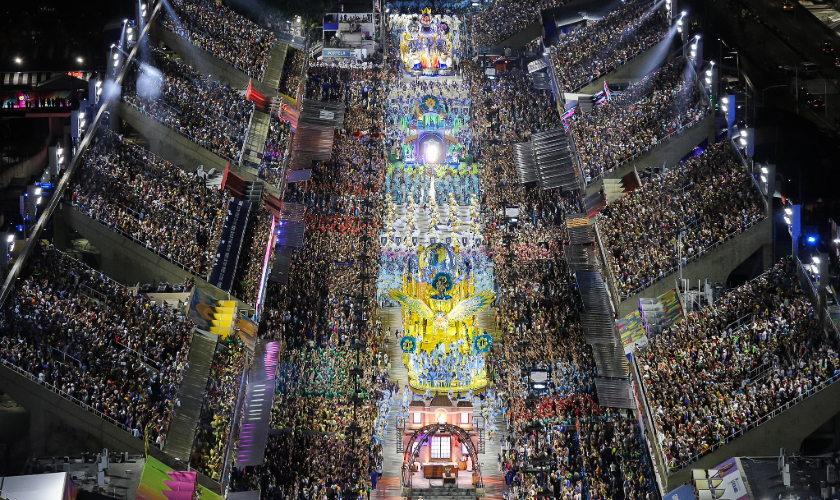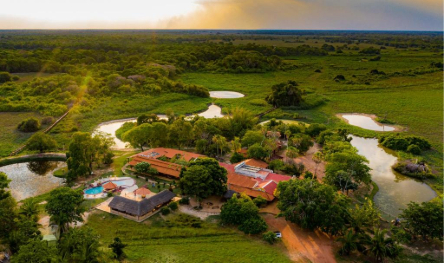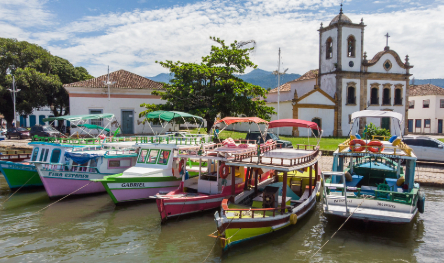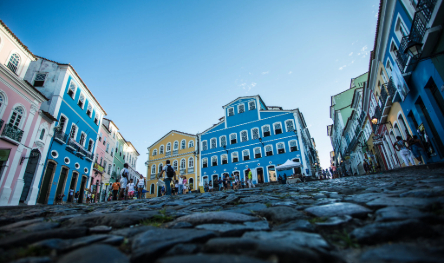The samba school parade is a vibrant and central component of Rio de Janeiro's Carnival, showcasing the rich cultural tapestry of Brazil through music, dance, and elaborate costumes. Here's how it works:
1. Samba Schools
Samba schools are community-based organizations that represent a specific neighborhood or community. Each school is a social group that comes together to prepare for and participate in the Carnival parade.
2. Parade Grounds
The main parade takes place at the Sambadrome, a purpose-built parade ground in Rio de Janeiro designed for the Carnival festivities. It is a massive avenue lined with spectator stands.
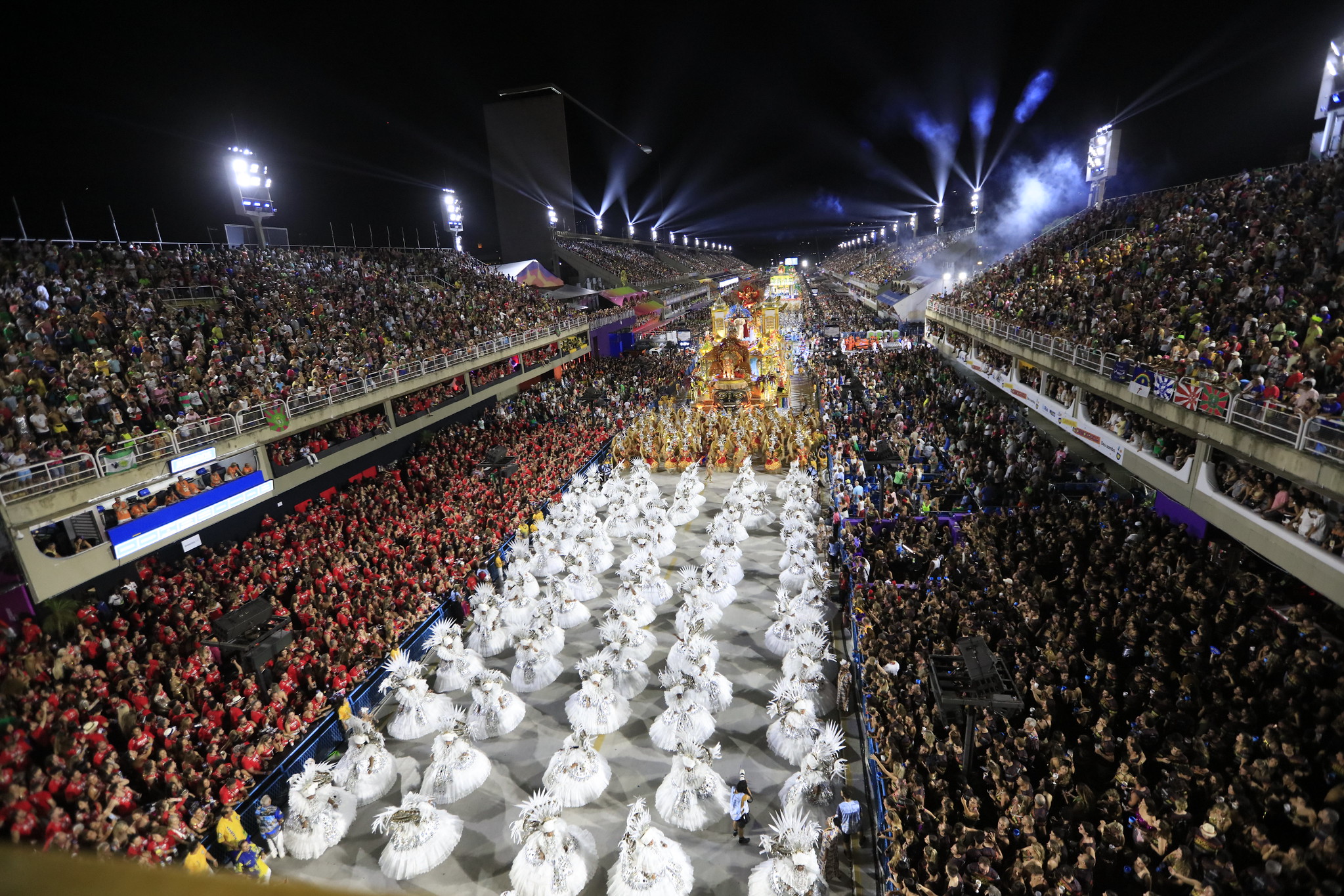
(Imagem: Marcos Terra Nova / Rio Tur)
3. Competition and Themes
The samba schools compete against each other for the coveted title of Carnival champion. Each school selects a theme for their parade, often rooted in Brazilian history, culture, or social issues.
4. Floats and Costumes
Samba schools create elaborate floats and costumes that align with their chosen theme. These can be massive, intricate constructions that often require months of preparation. Samba schools often have multiple floats as part of their parade entry. The number can range from 4 to 8 or more, depending on the school's budget, creativity, and the chosen theme. Each float is decorated to represent a specific aspect of the overall theme.
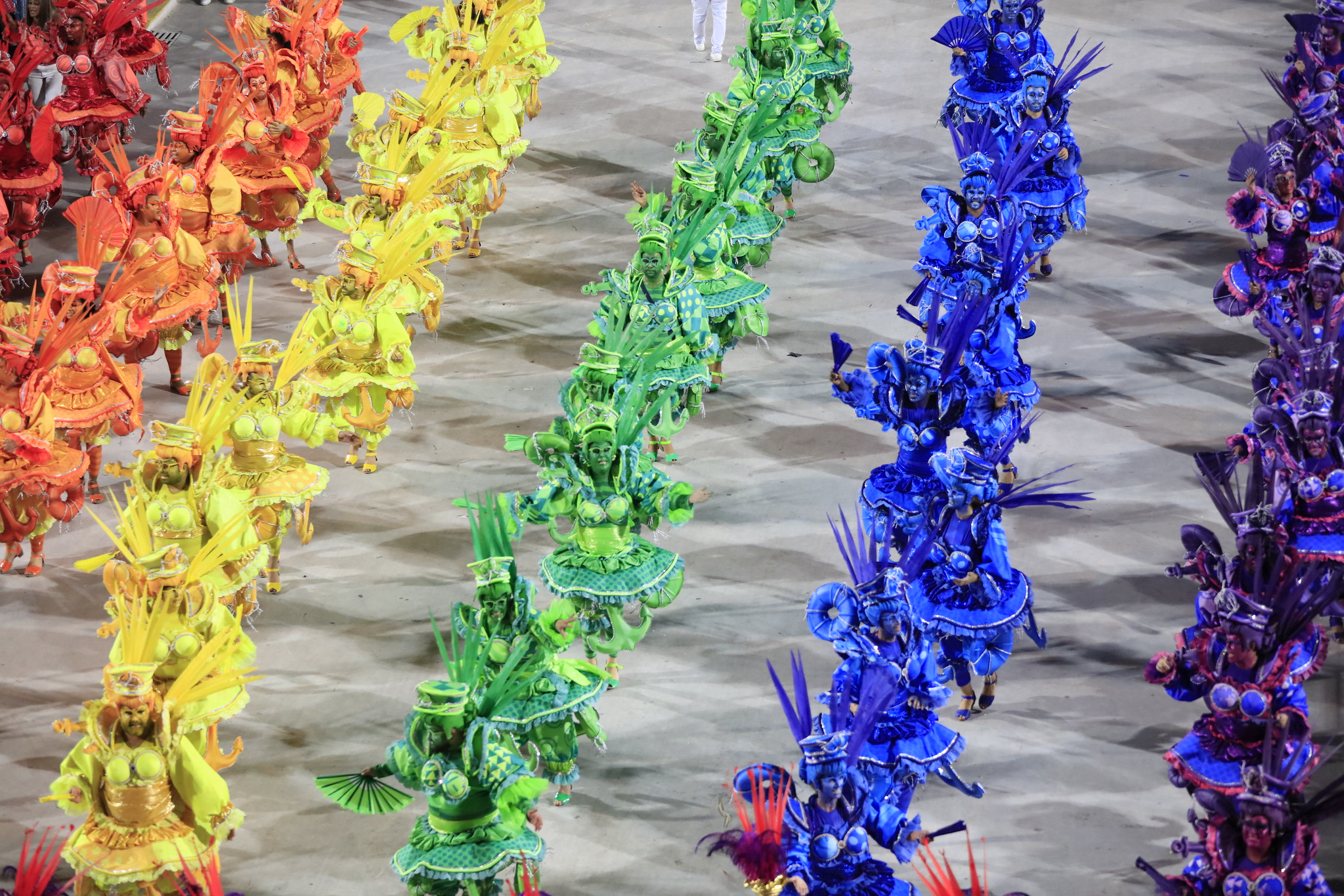
(Imagem: Marcos Terra Nova / Rio Tur)
5. Components
The term "components" refers to the individuals who actively participate in the parade, including dancers, musicians, and supporters. The number of components can be substantial, often exceeding thousands of participants in larger schools. These individuals are organized into different sections, each with its own choreography and costumes.
6. Sections
Samba schools are divided into different sections, and each section has a designated role in the parade. Sections may represent different elements of the theme or showcase specific cultural aspects.
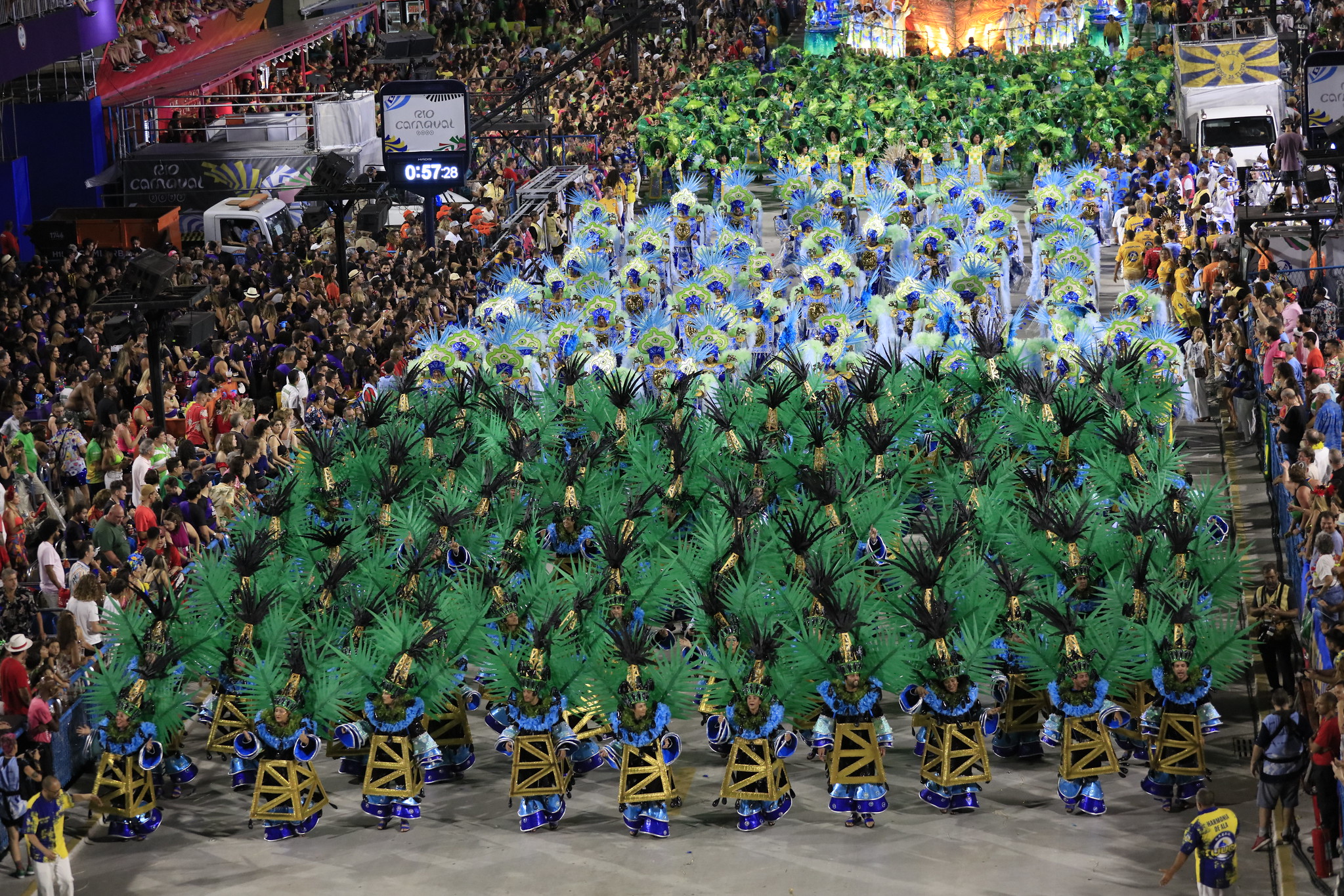
(Imagem: Marcos Terra Nova / Rio Tur)
7. Musicians and Singers
The parade features a significant number of musicians and singers who contribute to the lively and rhythmic atmosphere. These individuals play various instruments, including drums, percussion, and brass instruments, accompanying the samba enredo, the special song composed for the parade.
8. Samba Enredo
The heart of the parade is the "samba enredo," a specially composed song that reflects the chosen theme. The entire school, including thousands of participants, dances and sings to this theme as they move through the Sambadrome.
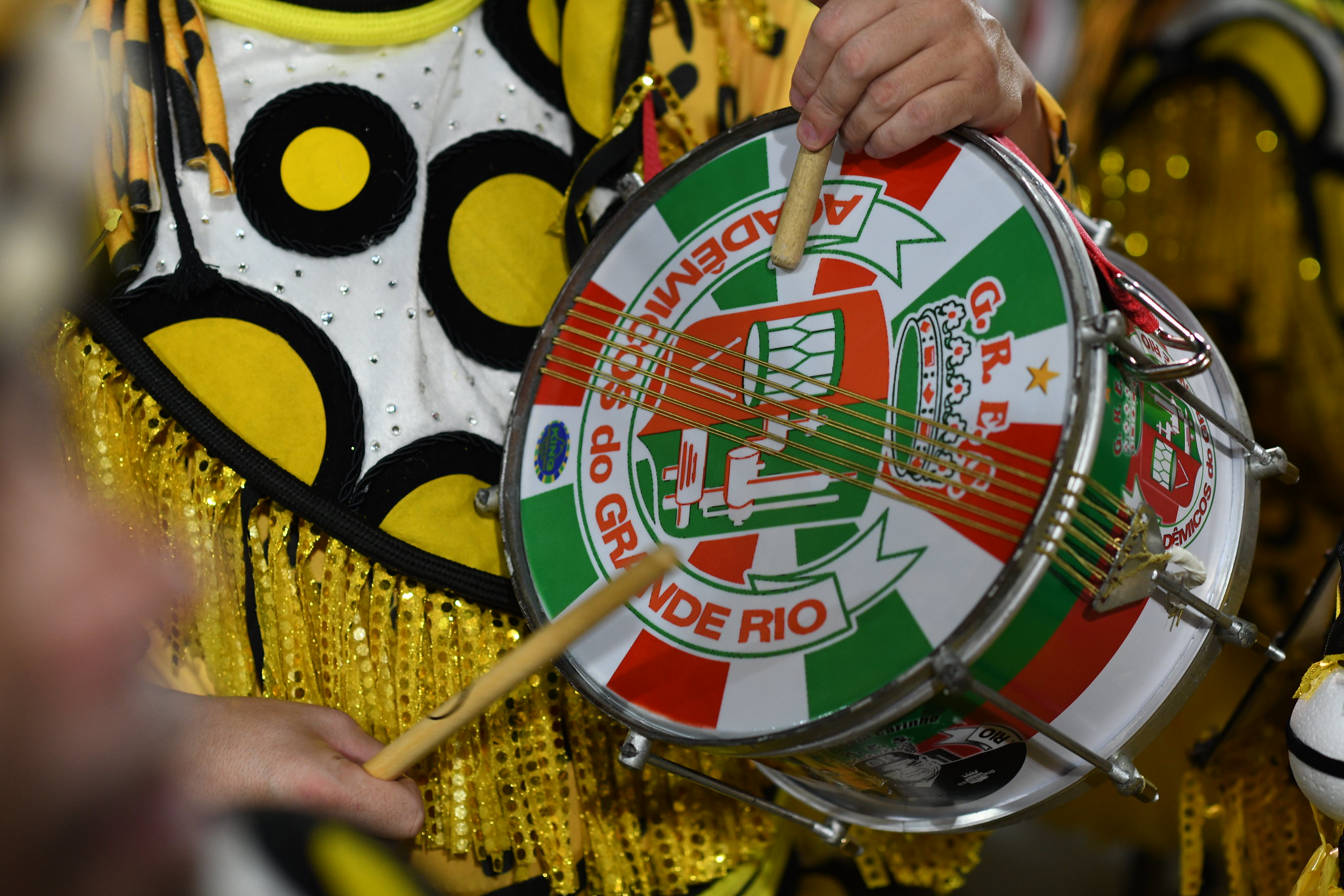
(Imagem: Alex Ferro / Rio Tur)
9. Costumes
Elaborate costumes are a crucial component of the parade. Each participant wears a costume designed to align with the overall theme of the school. The sheer volume of costumes can be staggering, and schools often invest heavily in their creation.
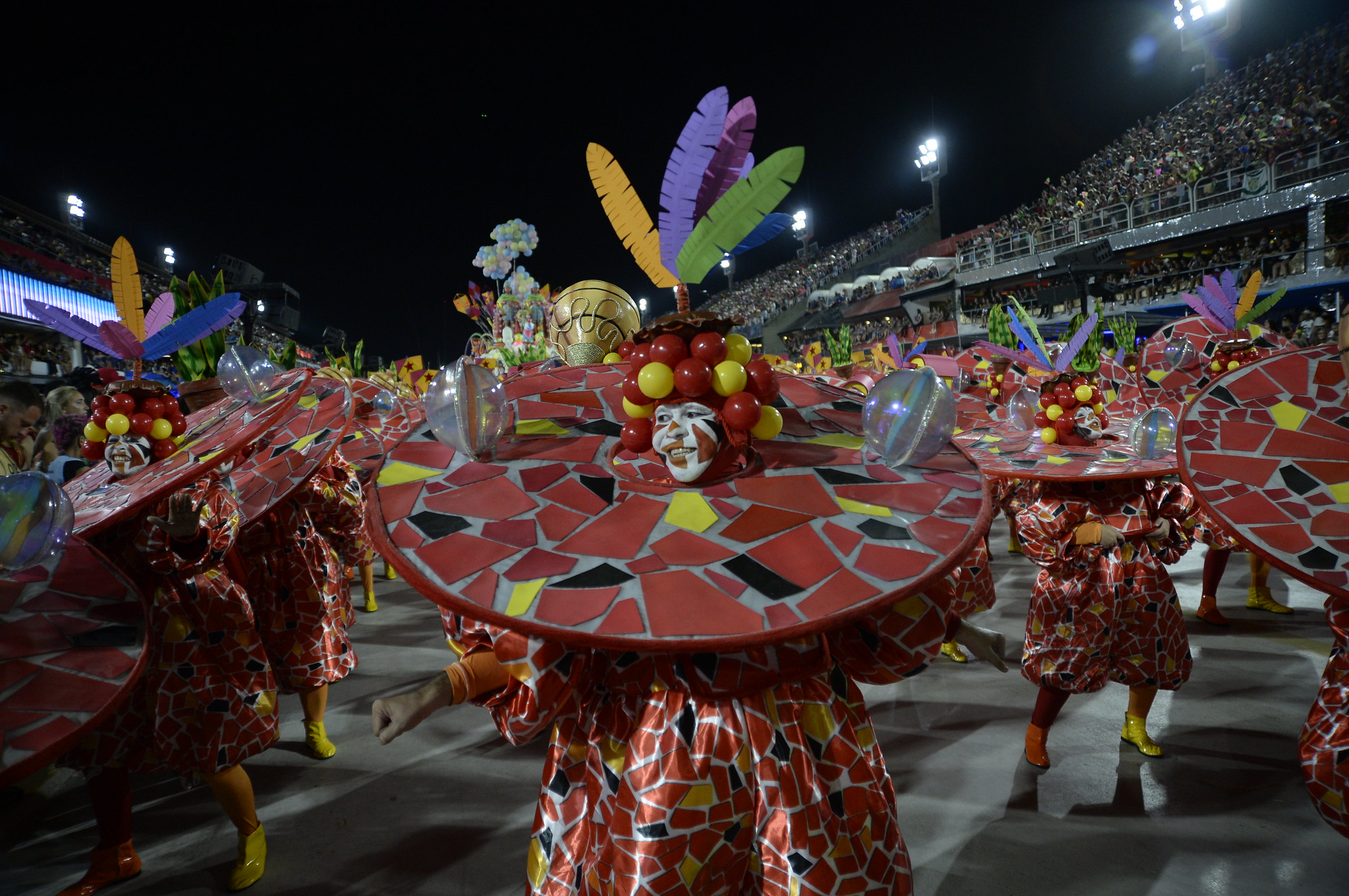
(Imagem: Alex Ferro / Rio Tur)
10. Carnival Parade Schedule
The samba school parades take place over several nights, starting with the “Access Group”, when 16 schools compete com Friday and Saturday, 8 each night, to secure the top 2 spots and be elevated to the “Special Group”. Although simpler, shorter and with a reduced number of floats and components, the Access Group parade level is excellent and tickets are cheaper than the Special Group’s parade. The top-tier schools, known as the "Special Group", parade on the Sunday and Monday nights of Carnival, 6 each night, not only to be crowned the winner of that year´s competition and participate on the Winners Parade the following weekend, but they must also not place last, as the bottom two ranking schools loose their spot to the winners of the Access Group, for next year´s carnival competition.
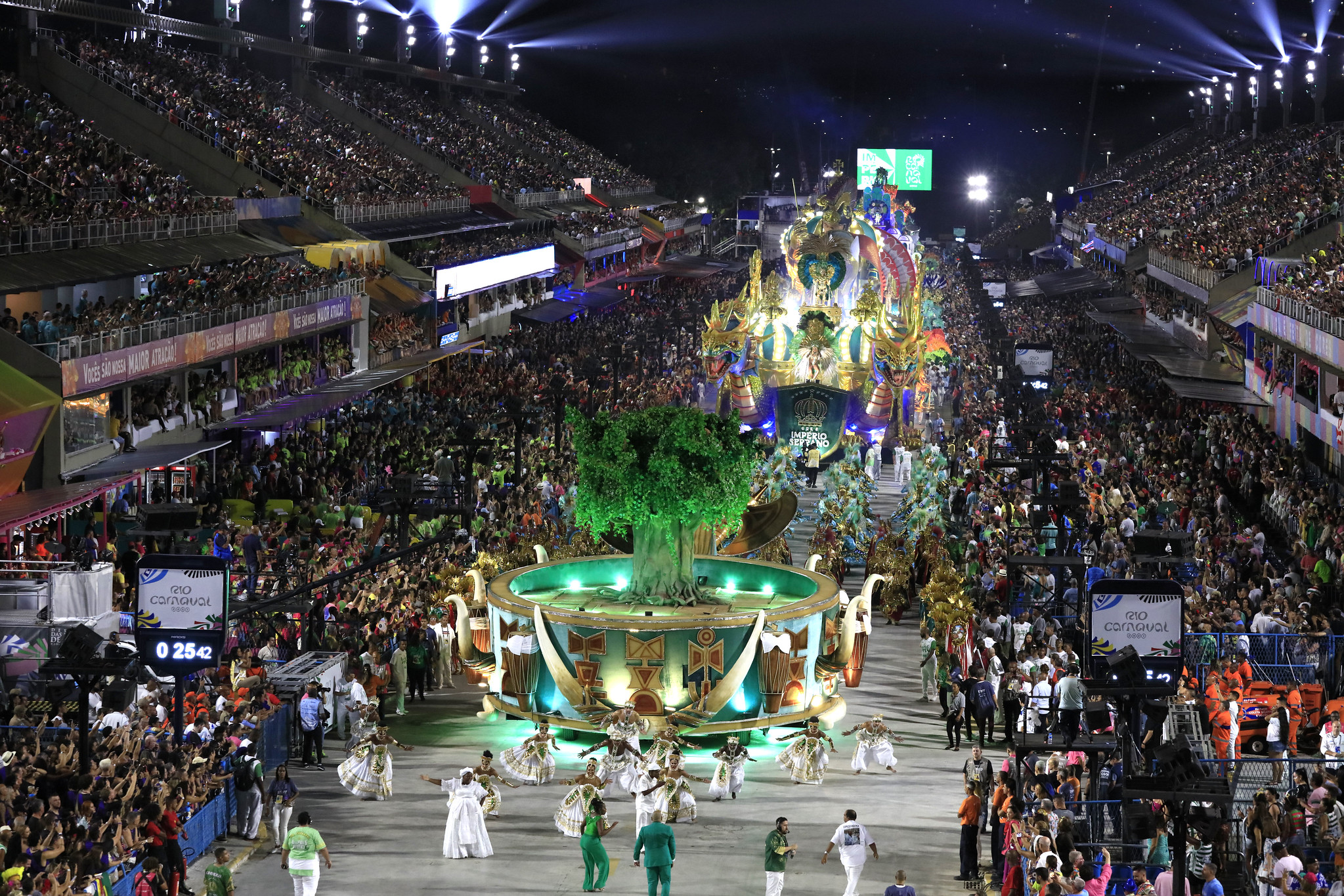
(Imagem: Marcos Terra Nova / Rio Tur)
11. Judging
A panel of judges evaluates each samba school based on various criteria, including creativity, execution, music, and overall presentation. The scores determine the winner of the Carnival competition.
The samba school parade is not only a major competition but also a deeply rooted cultural expression that brings communities together, celebrates Brazilian identity, and attracts millions of spectators from around the world to witness the magic of Rio's Carnival. While there is no strict rule on the exact number of floats and participants, the larger and more established samba schools tend to have more elaborate and extensive parades. The creativity, scale, and coordination involved in these parades contribute to the grandeur and excitement of Rio de Janeiro's Carnival.
HOW TO WATCH THE PARADE

(Imagem: Blumar Turismo)
Watching the samba school parade in
Rio de Janeiro's Carnival is an exciting
experience, and there are various types of tickets available to attend the
festivities. Here are some common categories:
1. Grandstand Seats:
Grandstand seats are the most affordable option and provide a basic view of
the parade. They are tiered seating areas along the Sambadrome, offering
spectators a direct view of the procession.
2. Open-Air Boxes (Frisas):
Open-air boxes are located alongside the Sambadrome’s street level and
provide a slightly elevated and more comfortable viewing experience compared
to grandstand seats. These boxed areas are open to the sky and can
accommodate groups of 6 people, but seats are sold separately. The frisas are
distributed in rows from A to D, like in a grandstand, being A the closest to the
parade.
3. Camarotes (Private Boxes):
Camarotes are VIP boxes that line the Sambadrome. These exclusive
spaces offer a premium experience, including catering services, private
restrooms, entertainment between parades, and often shared transportation to /
from the Sambadrome. These are the most expensive tickets. Camarote spaces
usually include the area normally occupied by frisas.
It's important to plan ahead and purchase tickets in advance, especially for
popular sections and premium experiences. Each ticket category provides a
unique perspective on the parade, allowing attendees to choose an experience
that suits their preferences and budget.
THE WINNERS PARADE
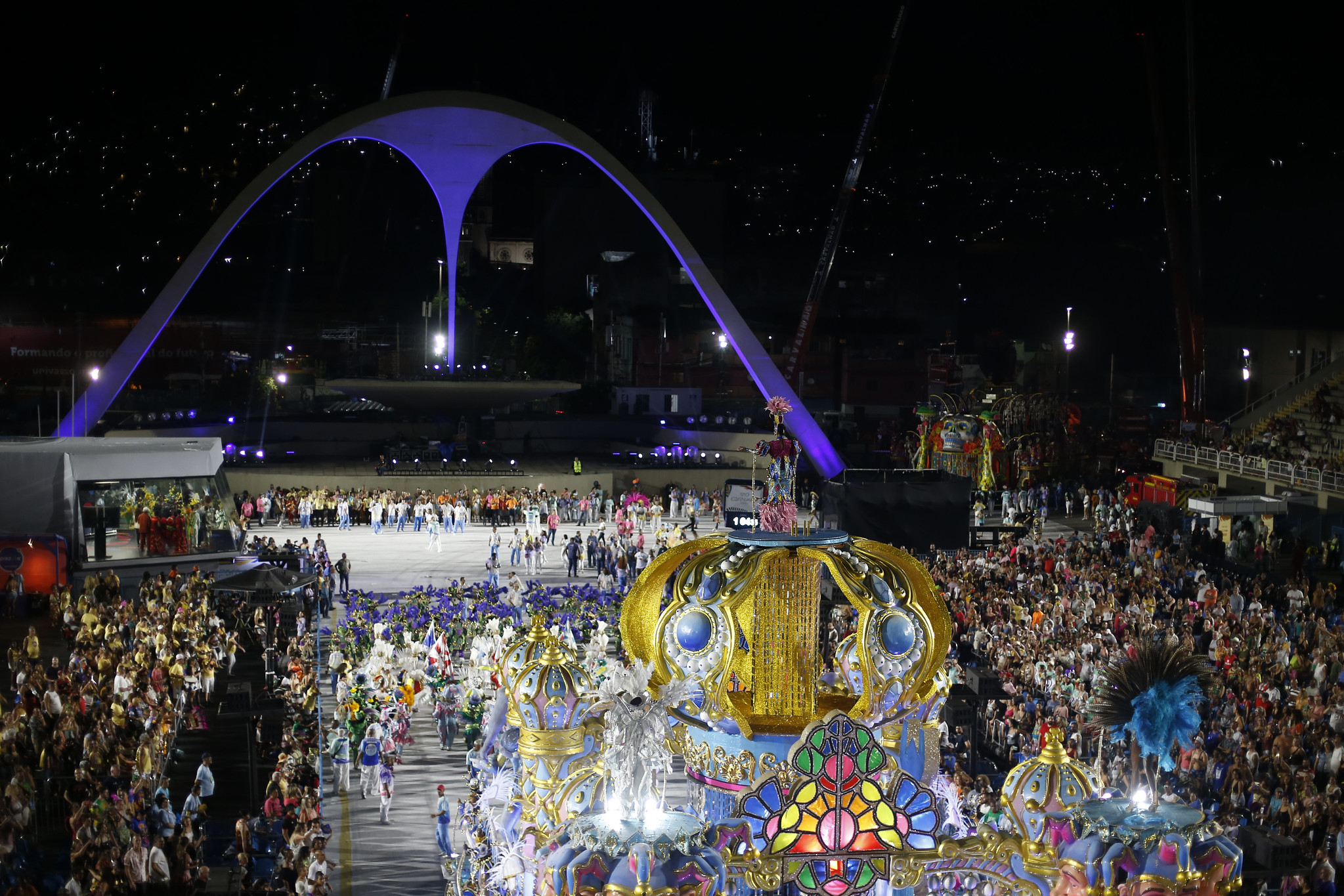
(Imagem: João Gabriel / Rio Tur)
For those who might not be up to the challenge of 4 days of non-stop partying of
Rio’s Carnival, the Winners’ Parade, also known as the Champions Parade, is a
perfect alternative where prices for hotel packages and tickets are lower, the
city is less crowded, but still offer all the elements and excitement of Carnival,
but just for 2 days. Taking place on the immediate weekend after Carnival, here
are some details of the Winners’ Parade:
1. Top-Placing Samba Schools:
The winners' parade exclusively features the 6 top-placing samba schools
from the Special Group category of the main competition. These are the schools
that earned the highest scores from the panel of judges.
2. Showcase of Excellence:
The Champions Parade serves as a showcase of excellence, allowing the
top-performing schools to parade through the Sambadrome once again. It
provides an opportunity for both locals and tourists to witness the most
outstanding performances of the Carnival.
3. Schedule and Timing:
The Champions Parade typically takes place on the Saturday following the
main Carnival parade nights. It allows the winning samba schools to revel in
their success and display their winning themes, floats, costumes, and
performances.
4. Celebratory Atmosphere:
The atmosphere during the Champions Parade is celebratory and festive.
Winning schools, their participants, and supporters take pride in their
achievements, and the event is marked by a sense of joy and accomplishment.
5. Special Performances:
In addition to the winning schools, the Champions Parade may also feature
special performances by renowned samba musicians and artists. It adds an
extra layer of entertainment to the celebration.
6. Extended Festivities:
The Champions Parade extends the Carnival festivities, allowing the city to
continue celebrating the creativity, energy, and cultural richness that define Rio
de Janeiro's Carnival.
7. Crowd Participation:
Spectators during the Champions Parade are often treated to an impressive
display of talent and artistry. The crowd actively participates, cheering for their
favorite schools and enjoying the spectacular show.
8. Culmination of Carnival:
The Champions Parade serves as the culmination of Rio de Janeiro's Carnival, providing a fitting finale to the weeks of preparation, competitions, and festivities that captivate the city.
The winners' parade is a highly anticipated event, drawing large crowds eager
to witness the best of the Carnival. It offers a chance to relive the magic of the
top-performing samba schools and celebrates the cultural significance and
artistic brilliance of Brazil's most iconic festival.

